Riding Horses

Short history of the Domestication of Horses
The today's riding horse is the result of a long evolutionary process of about 50 million years. It began with small animals, about the size of a medium-sized dog, and developed to the size of the horses as we know them today and which move rapidly over steppes and all types of terrain.

During this evolutionary process, mankind tamed and bred horses in captivity and through human-directed selection, these processes characterize every domestication and so different horse breeds have been created.
Wild horses
If we ask ourselves whether there are still authentic wild horses today, that means animals that have not been influenced by domestication, the answer is yes, although the number of wild horses is currently very small.
In 1881, a Russian-born explorer named Nicolai Mikhalo Vich Przewalski discovered a very small herd of wild horses at the border between Mongolia and Sinkiang in Central Asia.
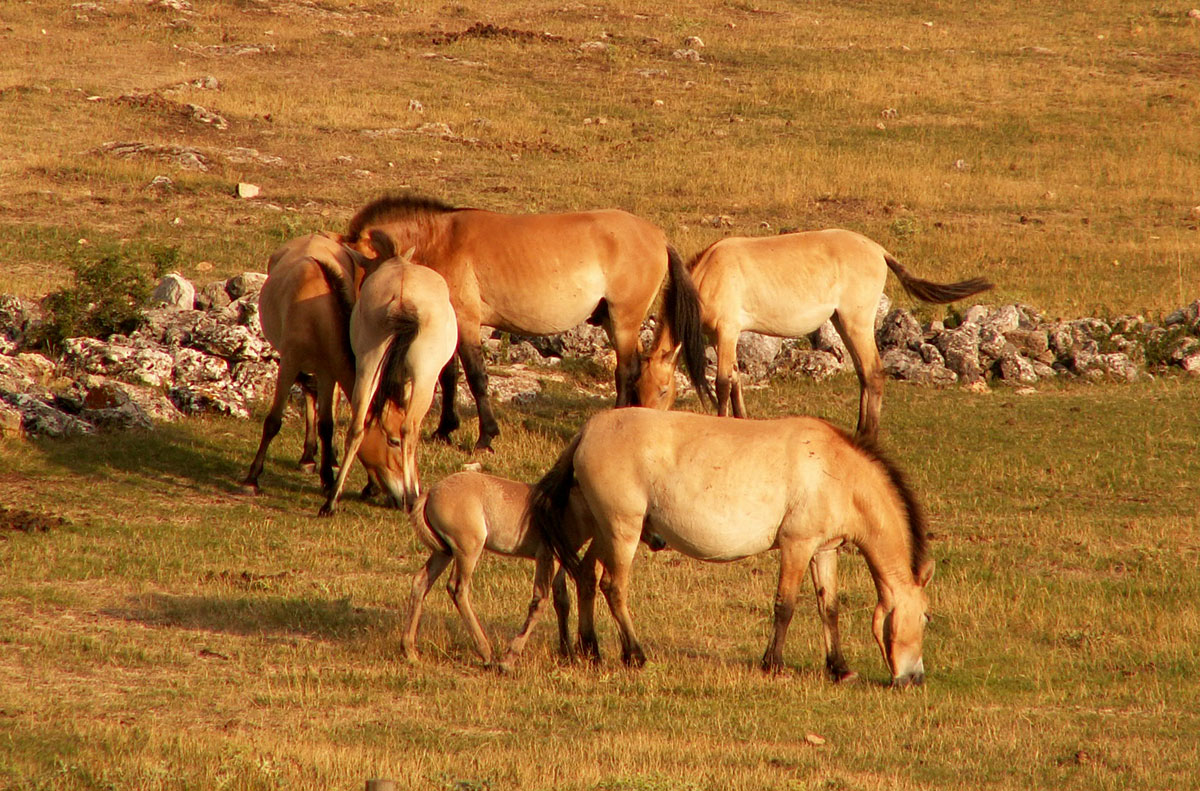
This animal received the name of “Mongolian Wild Horse” or “Przewalski Horse”, it measures 1.3 meters at the withers and has a thick head. It is believed that this is the only authentic wild horse that exists today and whose ancestors have never been domesticated.
While other breeds, such as the Mustang in North America, the Brumby in Australia, or the Icelandic horse, are also commonly referred to as "wild", the truth is that they had already been domesticated and afterwards were returned to the wild. For example, the Mustang were brought to North America with the Spanish conquest.
Domestic horses
Where do horses come from?
Some affirm that horses come from North America and from there they emigrated towards South America and Asia passing the frozen strait that used to unite America with Asia, and from there they expanded all over Europe and Africa.
Over the same strait, tribes migrated to North America, which hunted the horses excessively until their extermination in that region. Fortunately, this did not happen again in Asia and Europe.
Horses would not return to the American continent until the Spanish conquest, when they were reintroduced to the same continent from where they had emigrated.
How and why was the horse domesticated?
A breed or species is considered as domesticated, when humans interfere with their reproduction.
From here on, their evolution is influenced by human selection and natural distribution plays a minor role. Domestication partially or completely separates the animals from the wild horses.
Horses used to be hunted to eat them. But this changed between 11.000 and 4000 BC, when the hunter-gatherers gradually developed into producers and began to devote themselves to agriculture and livestock (sheep, goats, cows, pigs, dogs, etc.).
Different studies have tried to determine what breed was the origin of horse domestication:
- The Tarpan or Eurasian wild horse: this horse inhabited the South of Russia and Ukraine and the steppes of Eastern Europe. It became extinct in Ukraine in the late 19th century.
- Przewalski's horses: it is based on issues related to the 64 chromosomes of this horse and the 62 that the current domestic horse has.
- Different breeds: a mitochondrial DNA test conducted among 600 horses of 25 different breeds indicated that they came from at least 17 different genetic groups and that they were domesticated in six different places.
The latter study indicates that the earliest domestication of horses could have taken place in the Eurasian Steppe, in the regions of Mongolia and Kazakhstan between 3,500 and 3,000 B.C. Horses may have been mainly used for meat and milk at first.
Therefore, determining where horses became domesticated is very complicated in theory.
Although horses were initially domesticated to be consumed as food, they soon served humans in their development and so began a close relationship between horses and humans that still exists today.
Riding on horses allowed humans to overcome great distances, fight wars and build empires, but also to work their fields more effectively.
And so began a close bond between humans and horses which has also been written down in the history of mankind: Bukephalos, the horse of Alexander the Great, Babieca, the horse of the Spanish Cid Campeador, Incitatus, the horse of the Roman emperor Caligula, Marengo, the white horse of Napoleon, Pegasus, the winged horse of the Greek mythology or Rocinante, the horse of Don Quixote de la Mancha.
Equestrian Tourism
This close bond between humans and horses results in the desire of many riders today to spend their "Holidays on horseback".
The so-called riding holidays arose from the combination of their passion for horses and the desire to discover new places, to enjoy other cultures and traditions in different countries from the back of a horse.
We invite you to discover the riding programmes that Ampascachi Horse Riding Holidays has thought for you to visit Argentina.
And be sure to check out our horse riding holidays in Argentina.
Would you like to be part of a group with an equestrian soul?
Join the Ampascachi Community. Obtain exclusive benefits for your holidays.
We tell you how to start, train and take care of your horse.
Interviews with direct providers of riding tours around the world.
Opinions of outstanding equine scientists and personalities in the equestrian sport world.
Elements used for the domestication of horses
Over time, different elements or accessories have been developed and used in order to domesticate, tame and exercise control over the horses and to improve riding techniques.
Some of these elements, in order of appearance, were the following:
The bridle and mouthpiece or bit which controls the head and mouth of the animal, both when riding and pulling the carriages and ploughs. This accessory dates back to the year 2.300 BC although it was not permanently established until around 1300 BC.

The saddle, which evolved to today’s saddle with a wooden tree, contributed to improve the safety of the rider on the horse, especially in wars. The saddle did not appear until 500 BC.
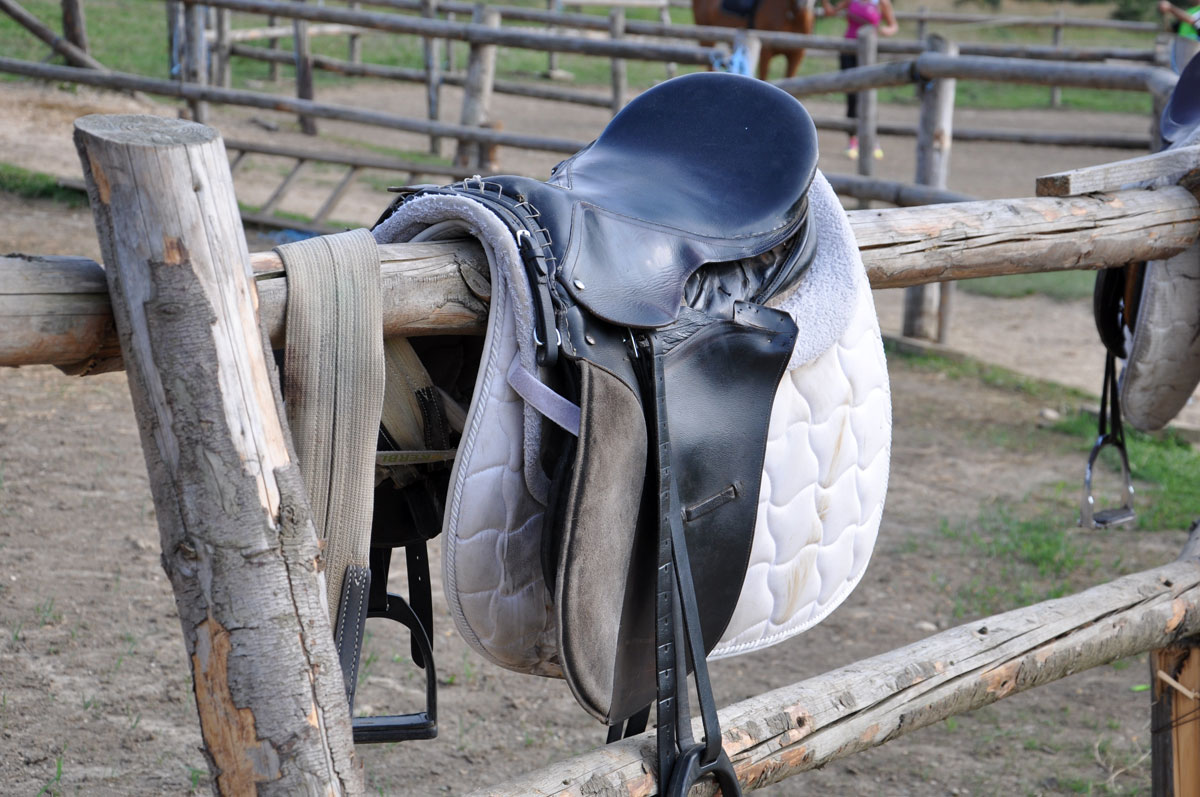
The iron stirrups, which provided the rider with two points of support for his feet, which significantly improved the balance and marked a very important change for the fighting with spears and swords.
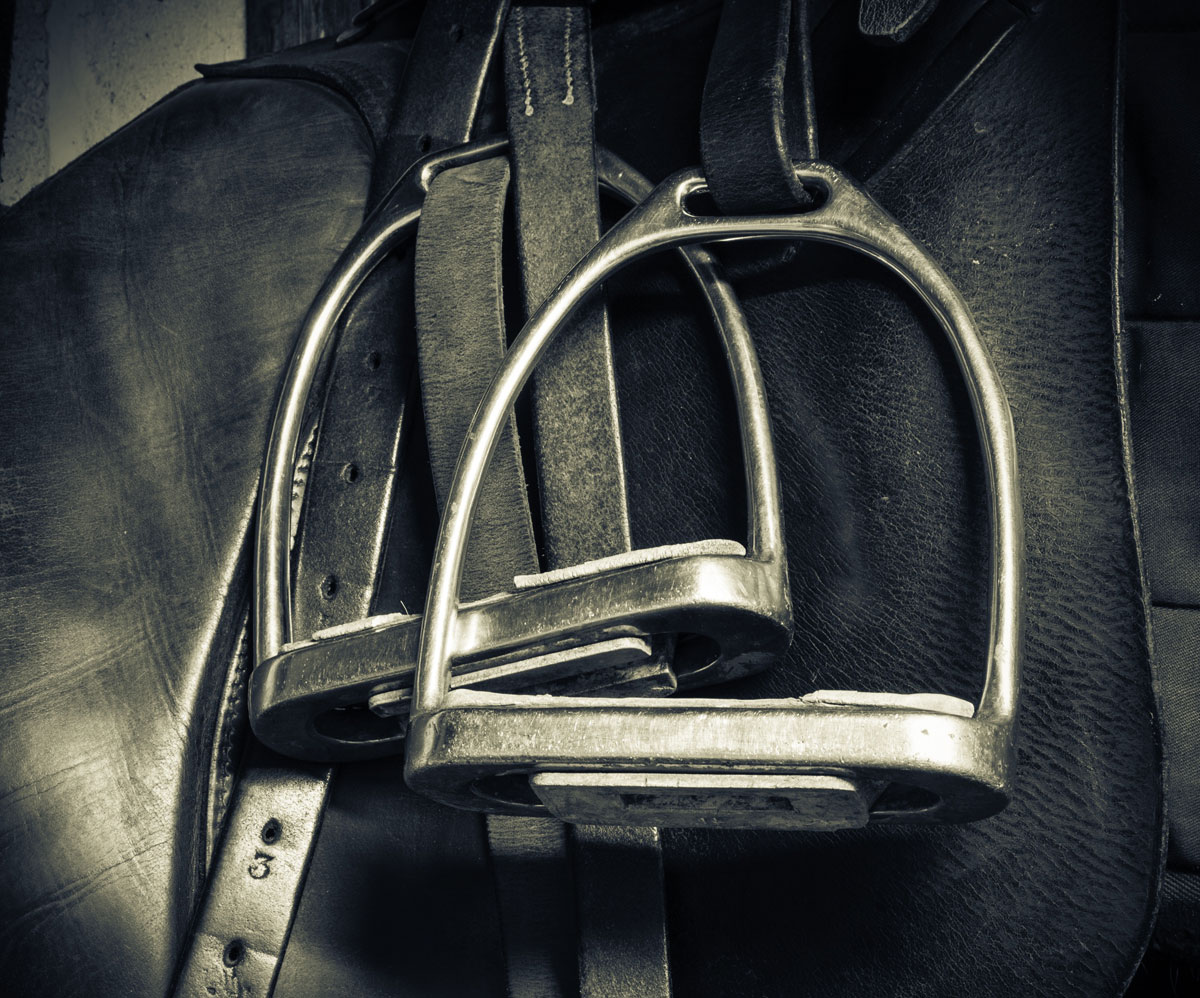
Although there were many advantages, stirrups were not used until late because neither the Persians nor the Greeks nor the Romans considered them practical. Its appearance happened in the eighth century AD, although Assyrian iconographic samples from 850 BC show men on horses with their feet on something similar to stirrups.
The horseshoe with nails, was a decisive improvement for riding, above all on hard and stony ground, as they protect the hooves of the horses.
Historical references to horseshoes with nails, as we still use them today, date back to the 9th century AD.

The horn structure, from injuries caused by the weight of the rider and the saddle or hard underground and can seriously affect the health of the hooves.
Best Horse Breeds For Riding
There are a large number of different horse breeds, but we are going to mention only the most popular breeds for dressage, jumping and horseback riding, especially for trail riding, as well as the breeds they descend from.
We will group them into:
- Breeds for Equestrian Sport
- Breeds for trail riding
- Special breeds for horseback ridings
- Basic Horse Breeds
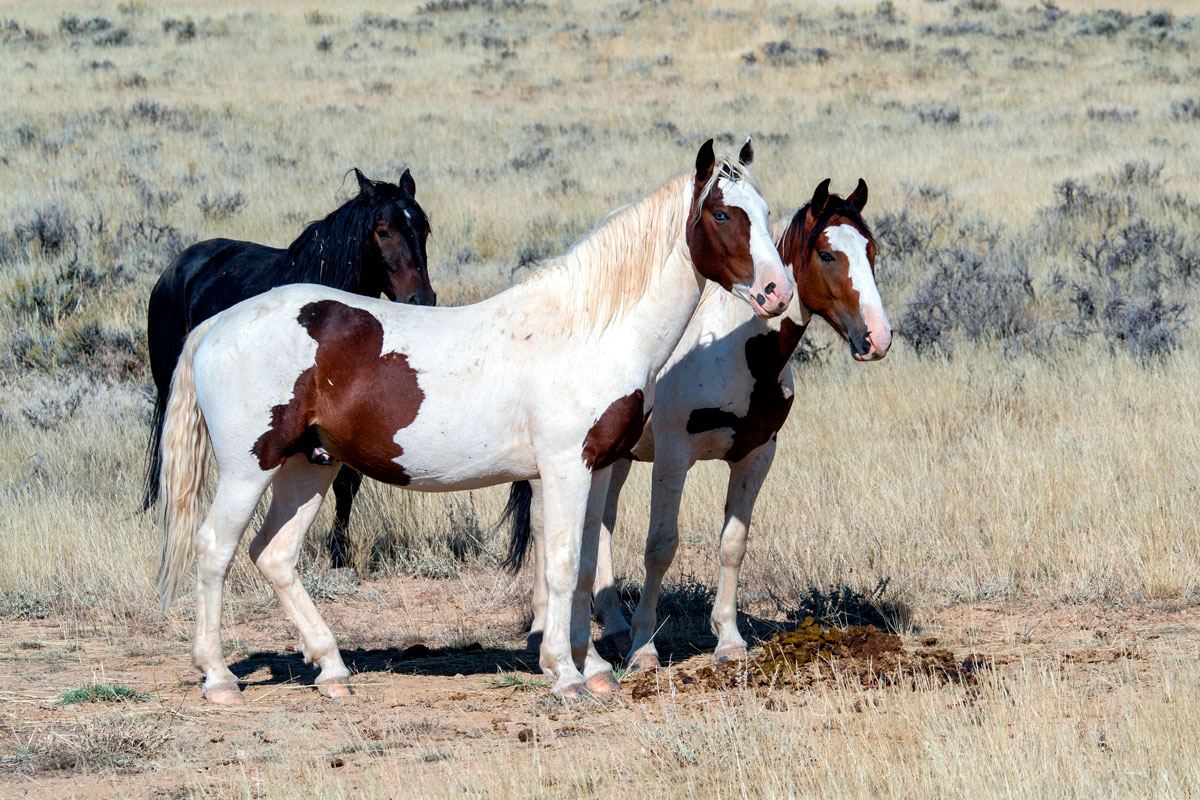
Breeds for Equestrian Sport
DUTCH WARMBLOOD – KWPN
This horse is a sports horse. As the name suggests, it has been bred for equestrian sports being successful in dressage and show jumping.
It is also suitable for recreational outdoor riding.

HANOVERIAN (HANN)
The Hanoverian horse is originally from Germany and is currently one of the most popular breeds in the world, especially for equestrian sports.
Among his ancestors we find breeds like the English Thoroughbred, the German Holsteiner, and another German horse breed native to the Hannover region.
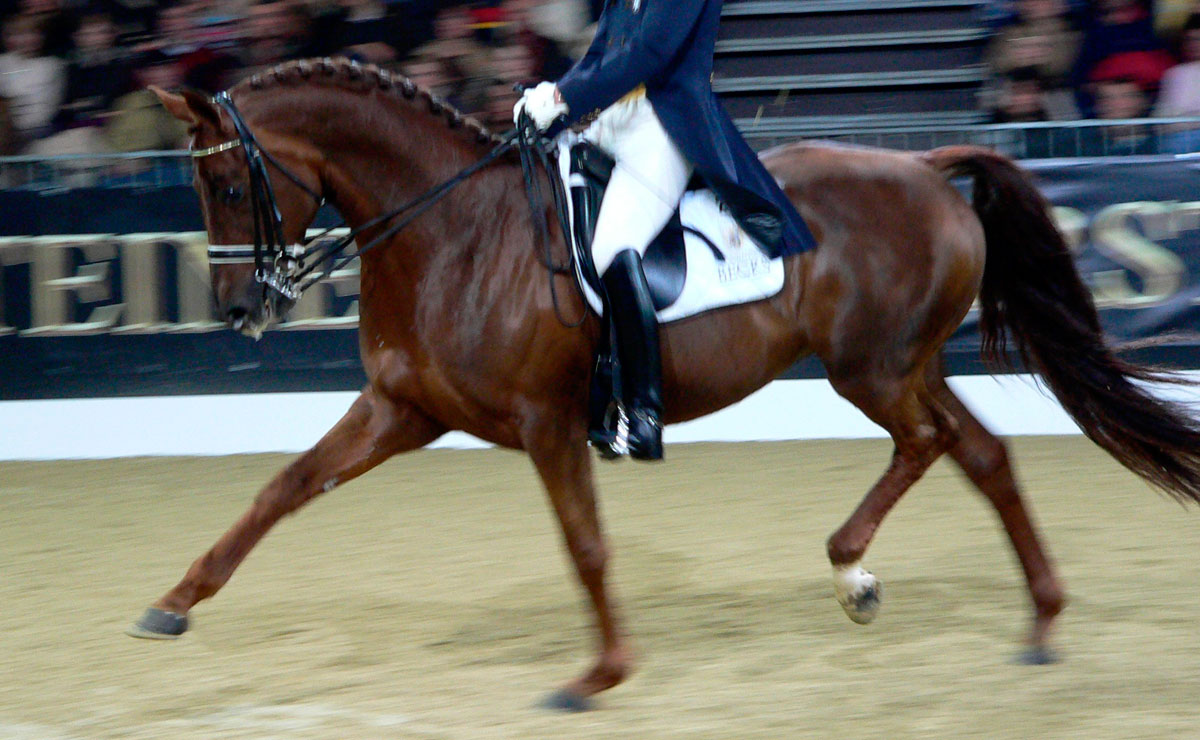
The outcome of different crosses was a light animal with elegant gaits suitable for riding, pulling carriages and for working in the fields.
OLDENBURG (OLDBG)
This breed was developed in Germany during the 17th century to obtain a horse that was suitable to pull carriages.
This breed is mainly based on the Friesian horse.
Over time, the breed was improved with the blood from breeds like the Neapolitan horse, Berber, Pure Spanish, Hanoverian and Thoroughbred, achieving a greater improvement for all kinds of uses, not only for pulling carriages.

This horse has a great physical build and succeeds in show jumping, dressage and even in driving competitions.
WESTFALIAN (WESFT)
Originally from the Rhineland region (Germany), is a cross of basically three breeds: Pure English, Arabic and Hanoverian.
In the 1970s, when equestrian sports experienced a great boom in Germany, this high-quality horse breed made a breakthrough in various disciplines.
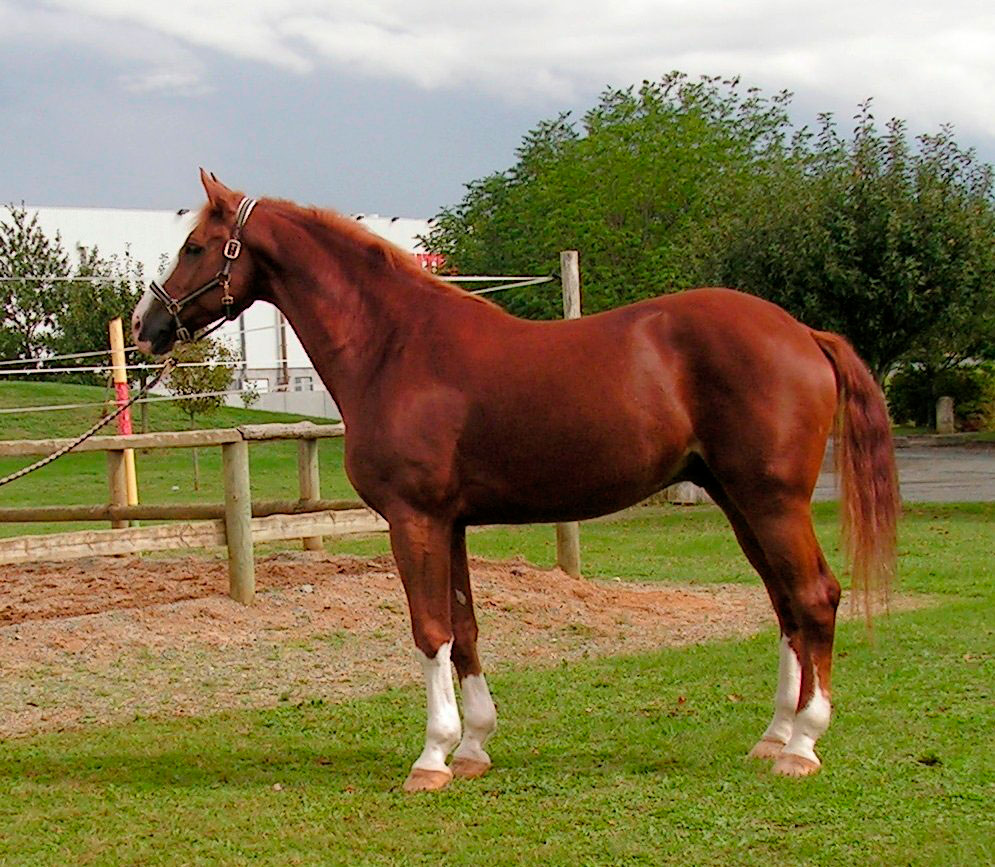
HOLSTEINER (HOLST)
Is a warmblood of German origin.
The beginning of this breed dates back to the 13th century in the province of Schleswig-Holstein, it is believed to be the oldest warmblood breed. For centuries, these horses have had various uses, for riding, pulling carriages and also for the work in the fields.
The characteristics of the current breed were defined in 1961. Today, this horse is a sports horse and used specifically for show jumping, but it is also successful in driving competitions, dressage and three-day eventing.
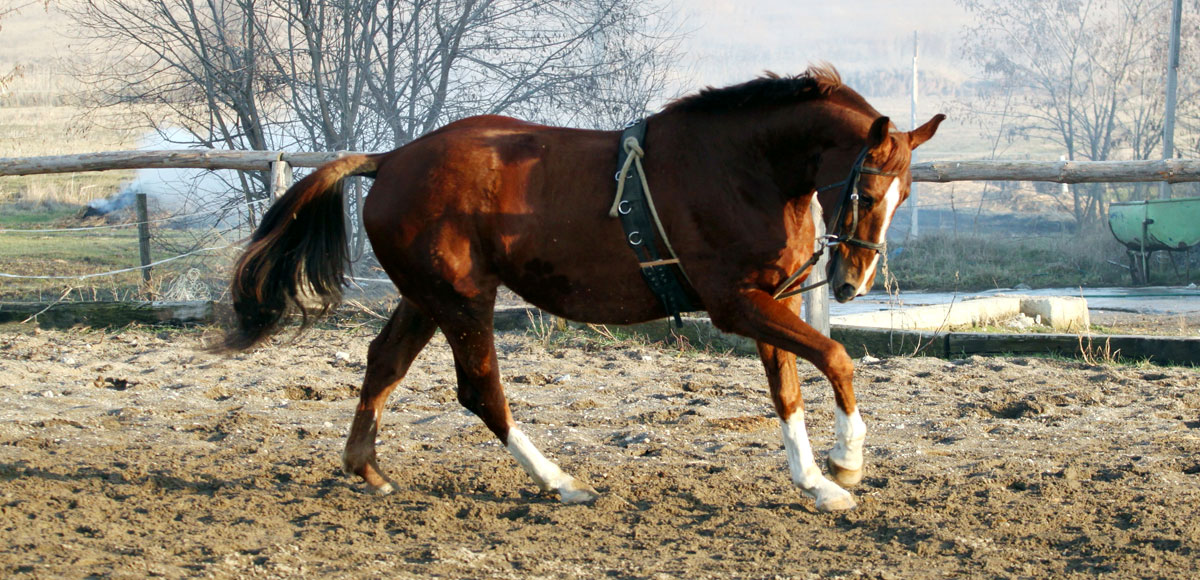
PURE SPANISH HORSE (PRE)
The Pure Spanish Horse received its current name in 1912, however it is commonly and internationally known as the Andalusian horse.
The origins of this breed go back to times before the Roman Empire.
Is a harmonic combination of the beauty of the Renaissance art and the Spanish Golden Age; the past and the present of this horse allows to visualize a great future.
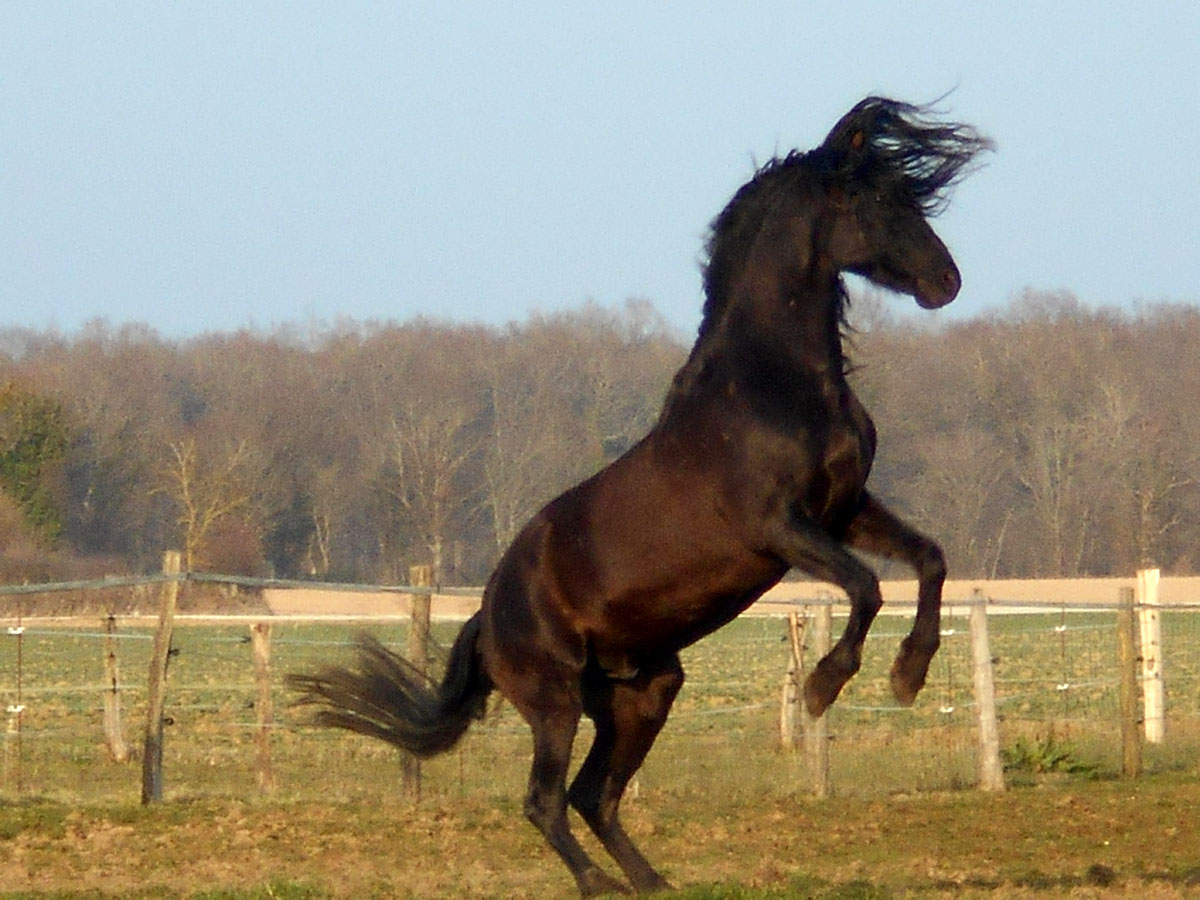
Is of great value, it has a balanced personality and it is versatile. Its beauty and temperament are an expression of its pure bloodand its genetics are constantly improved with each generation. It also has great influence in various crossed horse breeds in Central Europe and America.
TRAKEHNER (TRAK)
Trakehner is a tough, powerful, athletic and elegant horse.
The origin of the Trakehner is the former eastern Prussia (today the border region between Lithuania and Poland).
In the 17th century, Frederick I of Prussia selected the best studs among the Schweiken horses to breed military horses.
In the 19th century, they were crossed and refined with the noble blood of Arabian and Turkoman horses.
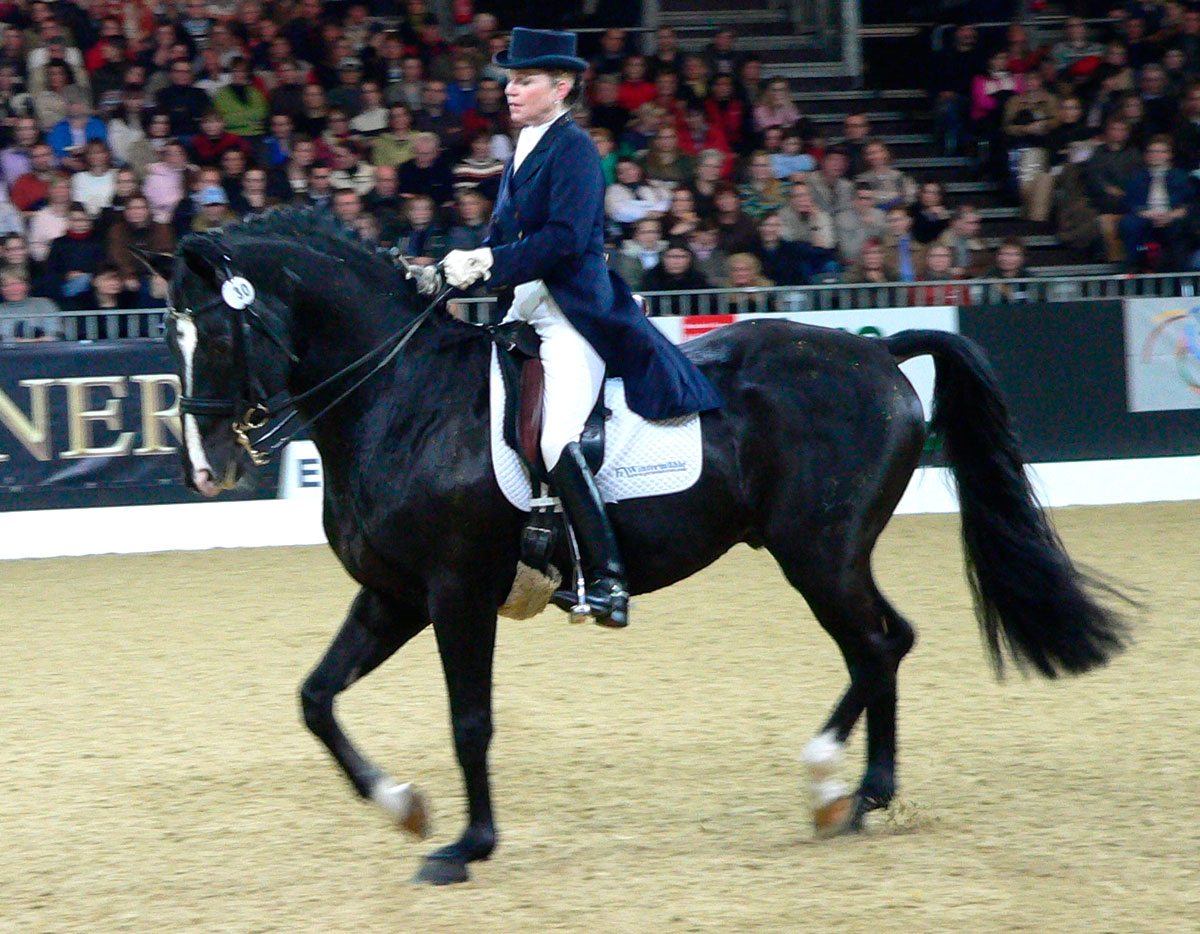
SELLE FRANÇAIS
Originally from France, these horses were mainly bred for equestrian sports.
Although it is a very young breed, in Europe it was recognized as such in 1970, but the blood of very old breeds run through its veins, like that of the English Thoroughbred, the Hunter or the Anglo-Norman.
This horse breed has a great ability to jump.

They have been crossed with different bloods to improve the breed:
the Anglo-Arabic with the French Trotter, the English Thoroughbred with the French Trotter and the Pure Spanish Horse with the Anglo-Arabic.
Breeds for trail riding
THE APPALOOSA
These horses were bred by the Nez Persé Indians in north-western Oregon and Idaho. Unlike other tribes, they solely selected the best stallions and mares to achieve the typical colours of the Appaloosas.
These animals were valued for their ability to move safely on rocky trails and slopes, their strength and their resistance to walk on all kinds of terrain. It has a strong and compact body and hard hooves.
These horses have a calm character and the spirit to ride for long hours and cover great distances without problems.
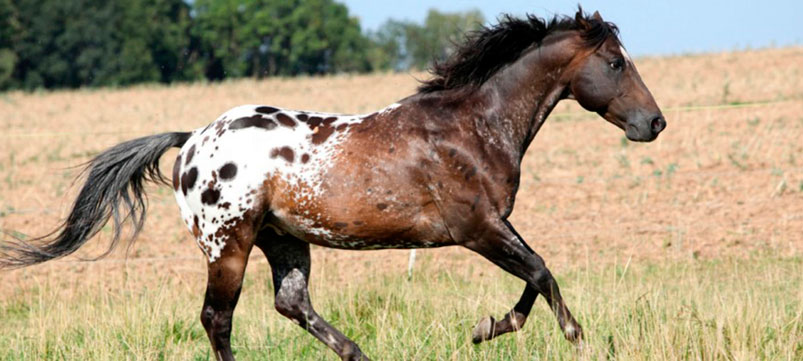
THE AMERICAN QUARTER HORSE
This US-American breed is the outcome of various crosses during colonial times
Their role varied between working farming and pulling stagecoaches. At weekends, they were used in short horse races.
It became a proper breed when the most important ranches in Texas started to breed this horse, such as the King Ranch, Four Sixes Ranch, Waggoner Ranch, etc.
The basis was the Pure Spanish horse, the Morgan and Saddlebred.
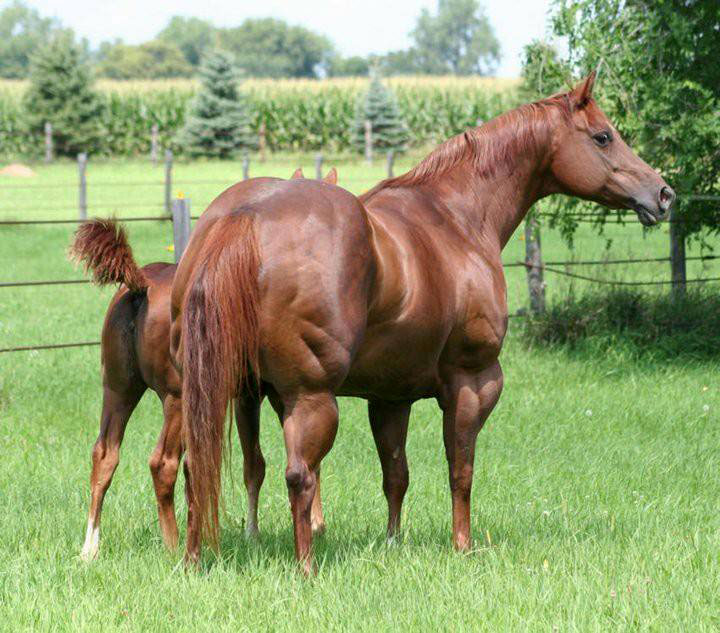
The purpose was having a “cow horse” with a natural instinct for working with cattle. Even in the automobile era, they were essential to handle and guide the herds.
The horse needs to provide a fast start and stop and a great ability to turn quickly which is necessary for the work with livestock; the powerful hindquarters provide these qualities and also give the horse the potential for an extraordinary performance in short races.
Subscribe to the Ampascachi Community and obtain benefits and exclusive content. Furthermore, we offer free advice on horses and equestrian tourism.
Special breeds for horseback riding
Here we want to mention the gaited or ambling horse breeds, which we think have a great future for the equestrian tourism, due to their comfortable and smooth gaits and their resistance to cover long distances at speeds.
THE PERUVIAN PASO HORSE
This equine breed is native to Peru, the territories that were occupied during the Viceroyalty of Peru, especially the northern part of what today is Argentina.
This horse came with the Spanish conquerors who brought horses from the Iberian Peninsula and that were a cross of the Iberian or Andalusian horse with the Berber Horse from North Africa, that had the ability to amble in their genes.

The Andalusian horse, that carried different blood lines from various breeds, like the Frisian, determined the body structure and bearing, while the African Berber inherited the ability to amble and the smoothness of the gaits.
The Peruvian Paso horse is an ambling or gaited horse (it moves one leg at a time), an isochronic four-beat movement known as the Paso Llano, which gives great comfort to the rider and allows to advance at average speeds of between 12 and 15 Km/h.
THETENNESSEE WALKING HORSE
This breed, also called Tennessee Walker, emerged in the south of the United States and is an ideal working horse that is even strong enough to pull a plough.
The ambling gait of the Tennessee Walker is smooth to ride and gives great comfort to the rider.
The origin of this breed are horses with an inborn ambling gait like the Narragansett Pacer from the USA and Canadian horses. These breeds were crossed to obtain a resistant horse which moves safely in the mountains.

At a later stage, the blood of other ambling horses and national trotter breeds was added and the result was the Tennessee Pacer with a good ambling gait, although still a little rough. Therefore, breeders kept crossing with different bloods to obtain a horse with a smooth ambling gait.
Today it is a very good horse for trail riding and horse riding holidays.
THE ICELANDIC HORSE
The Icelandic horse is the only autochthonous equine breed in Iceland, although it has spread to many parts of the world. Although it looks more like a pony, it is considered a proper horse.
It is believed that they descended from the Scandinavian ponies between the 9th and 10th centuries.
The first historic references date back to the 12th century, when they used to be cult object in the Nordic culture.

The Icelandic Horse adapted very well to the extreme conditionson the island.
They are very calm and brave horses and ideal for horseback riding in Iceland.
They have very unique abilities; besides the walk, trot and gallop they own two ambling gaits: the Tölt and the Skeid.
The Tölt is a variant of the trot; the horse moves the two legs of the same side at high speed but always maintains one leg on the ground. This lateral gait is comfortable for the rider.
The Skeid is a very fast ambling gait that can reach up to 56 km/h. The horse jumps from one lateral leg pair to the other with a short moment of suspension.
Basic Horse Breeds
We refer to two horse breeds that we believe have contributed to the creation of a large number riding horse breeds.
These are purebreds and still todays used to enhance other horse breeds. They are also used as sport horses and for horseback riding or equestrian tourism.
There exist more purebreds, but the most popular and best known are the English Thoroughbred and the Arabian horse.
THE ENGLISH THOROUGHBRED
The English Thoroughbred is an outstanding horse because of its speed and it has always been successful in horse races where it has beat the lighter Andalusian and the Berber horses since Roman times.
There are different theories about its origins, but it can be said that the English Thoroughbred roots back to a small group of stallions brought to England from North Africa and the Middle East< at the beginning of the 18th century.
Although this horse is mainly used for horse races it can also be adapted to recreational riding if properly trained.

THE ARABIAN HORSE
The origin of this horse is not entirely clear. There are various theories, but it is certainly one of the oldest horse breeds.
For which there is archaeological evidence. These 4,500-year-old findings show horses that look similar to today's Arabian horses. They developed in the deserts of the Middle East and spread from there worldwide due to trade and wars.
They were bred by Bedouins, who considered them part of their family. Only the most docile animals were selected for breeding.
The Arabian purebred is one of the ten best breeds in the world and it is used differently, but mainly for long-distance races or endurance.
Due to its resistance and docility, this beautiful horse is also ideal for recreational horseback riding and horse riding holidays.
It is without a doubt one of the best horses in the world.
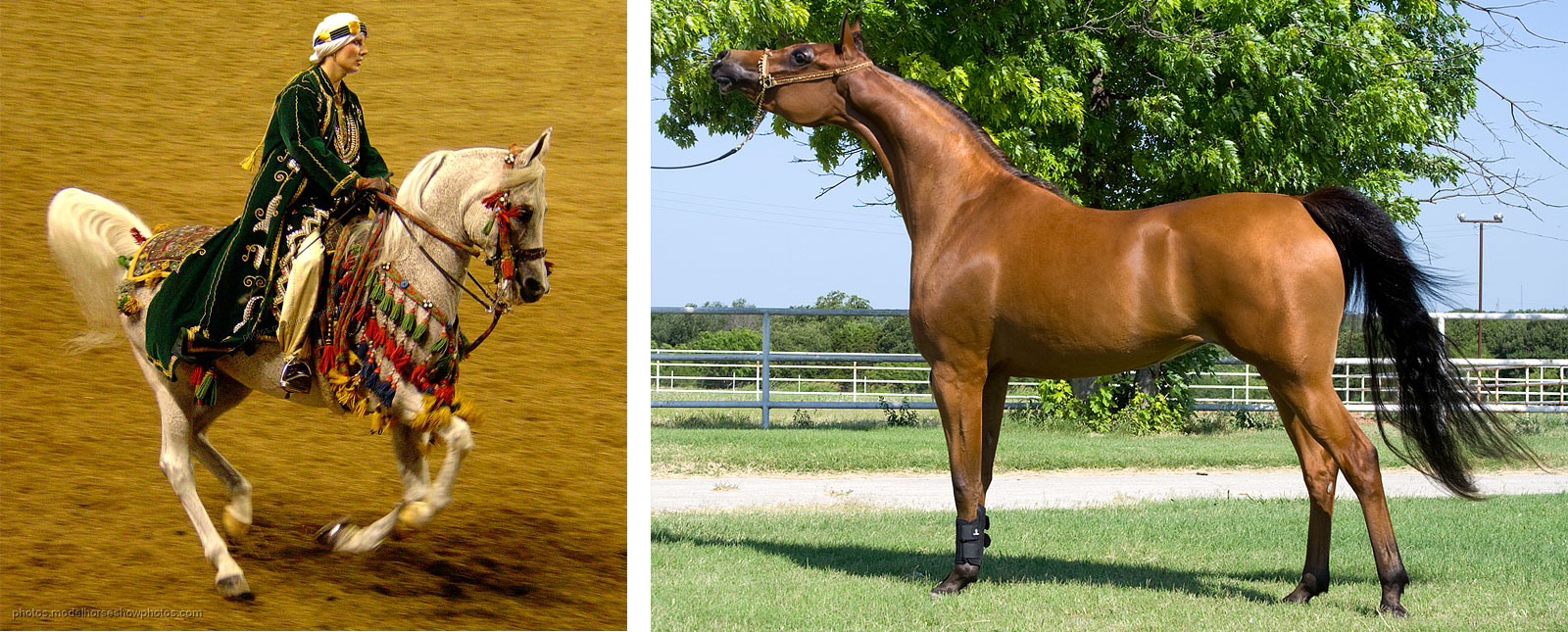
Would you like to go in depth into the world of horse training?
Download our free guide on horse training step by step, where we tell you everything we have learned about horse training in more than 25 years of experience.
Planning your horse riding holidays?
Join the Ampascachi Community. You will get exclusive advantages and guidance for your next horse riding holiday.


 German
German French
French Spanish
Spanish